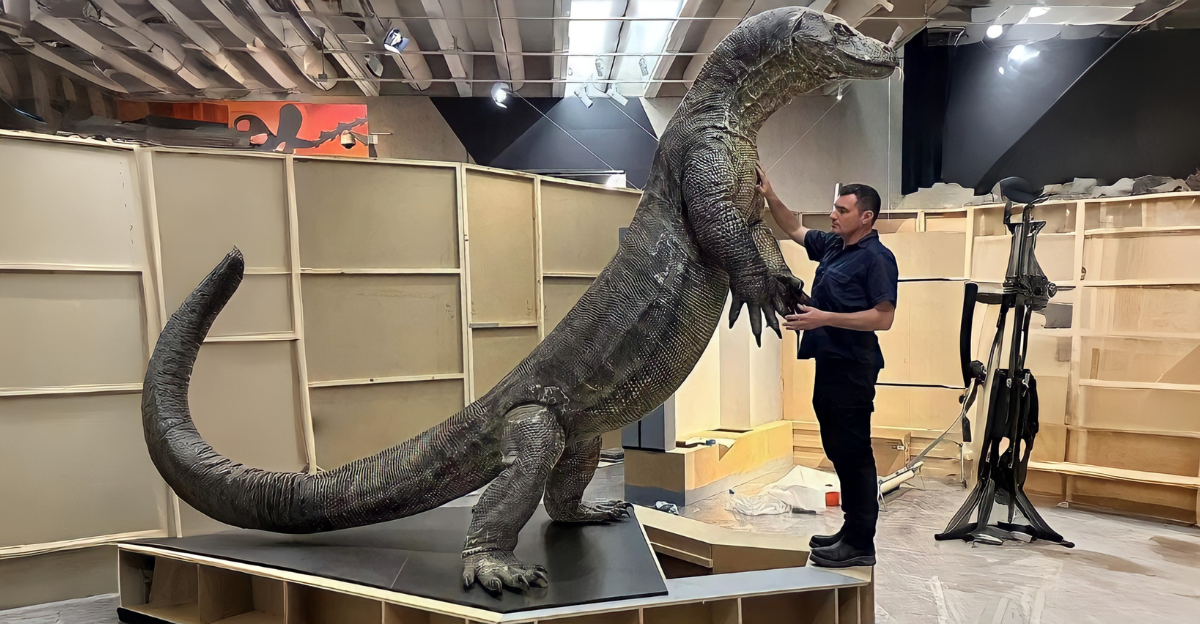
We like to imagine ourselves as top predators, masters of the food chain, unbeatable with our technology and gizmos. Back up a few million years, and we weren’t the predators—we were the prey.
Before civilization, our ancestors inhabited wild open spaces where existence was all about evading the jaws, talons, and claws of frightful monsters. From giant crocodiles lying in wait at ancient rivers to gigantic birds falling from the heavens, ancient humans were a delicacy so much more often than we thought.
In this gruesome parade, we arrive at five prehistoric predators who did more than intimidate early man—instead, they hunted him. And yes, things get a little gory.
1. Saber-Toothed Cat – The Apex Stalker
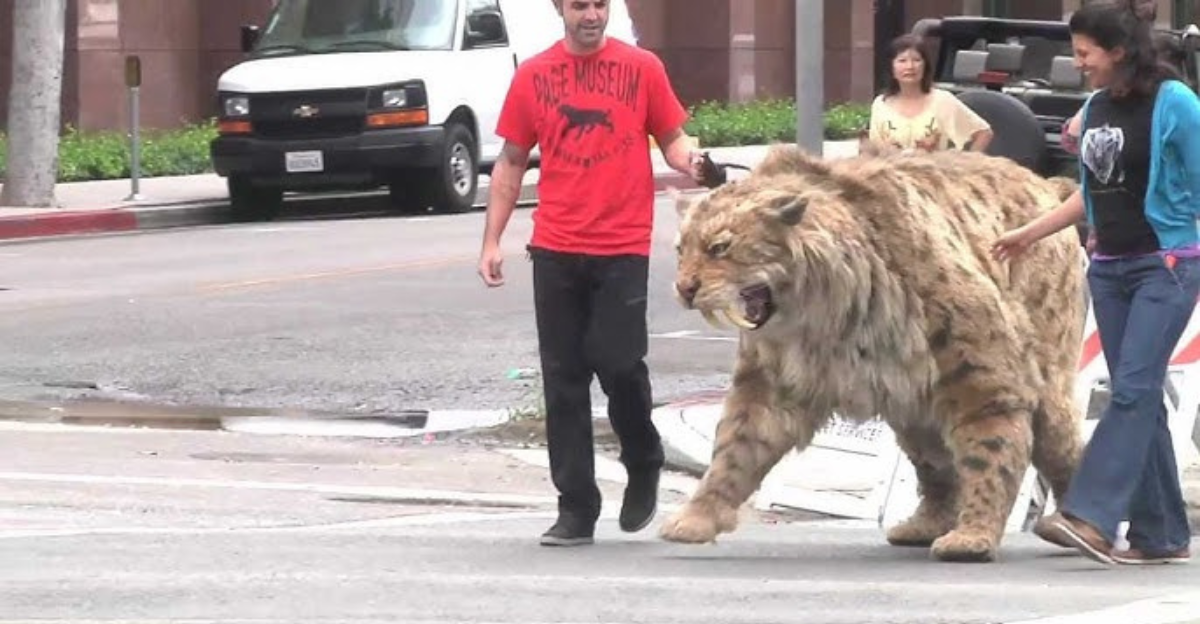
Forget about adorable housecats. Saber-toothed cats, like Machairodus kabir, were giant killing machines with dagger-like teeth. Fossils found in Chad show that they lived alongside Sahelanthropus tchadensis, one of the early human ancestors. These big cats were not just a nuisance—they were probably top dogs.
And as our ancestors grew cleverer and more synchronized over the years, even the most powerful hominins mostly avoided saber-toothed cats. It was not an equal playing field. These predators were over 1,000 pounds—larger than any man of the time. If a saber-toothed tiger laid eyes on you? Game over. Hide, run, or hope it already ate.
2. Haast’s Eagle – Death From Above
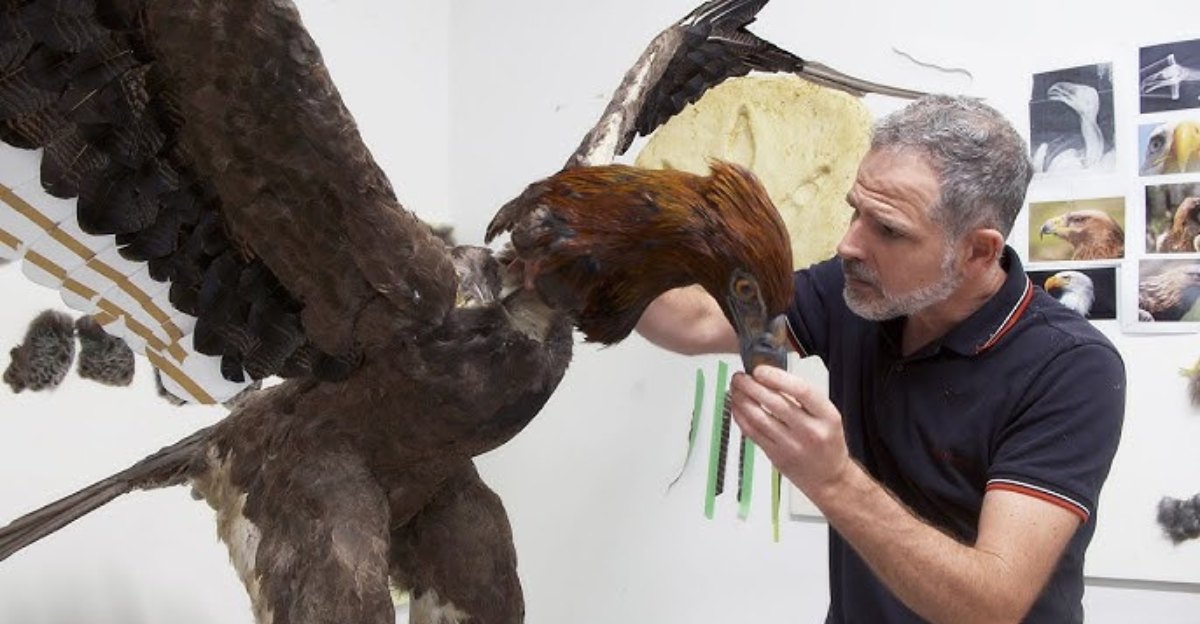
Soaring above ancient New Zealand, Haast’s eagle (Hieraaetus moorei) was a bird of terror. With talons as big as a tiger’s claws and a wingspan of almost 10 feet, this raptor could attack a moa—a giant flightless bird the size of a grown man. Who else shared the land? Humans.
Maori lore spoke of a giant bird that stole children, and science implies the legend is true. The Haast’s eagle would likely have regarded early humans—particularly children—as possible prey. After the moa were hunted to extinction, the eagles died off as well, as they couldn’t find another food source.
3. Crocodylus Anthropophagus – The Human-Eating Croc

Crocodylus anthropophagus literally translates to “man-eating crocodile,” and it earned that name. This 18-foot behemoth roamed the waters of Olduvai Gorge around almost 2 million years ago, where early hominins like Homo habilis and Australopithecus boisei would come to drink.
That’s when the crocodile would attack—leaping from the water’s surface with a surprise attack. Fossils around here have distinctive croc bite patterns, confirming these reptiles did not merely frighten early humans—they ate them. It’s a grim reminder that in most environments, the edge of the water was the deadliest place to be.
4. Ancient Hyenas – Bone-Crushing Foes
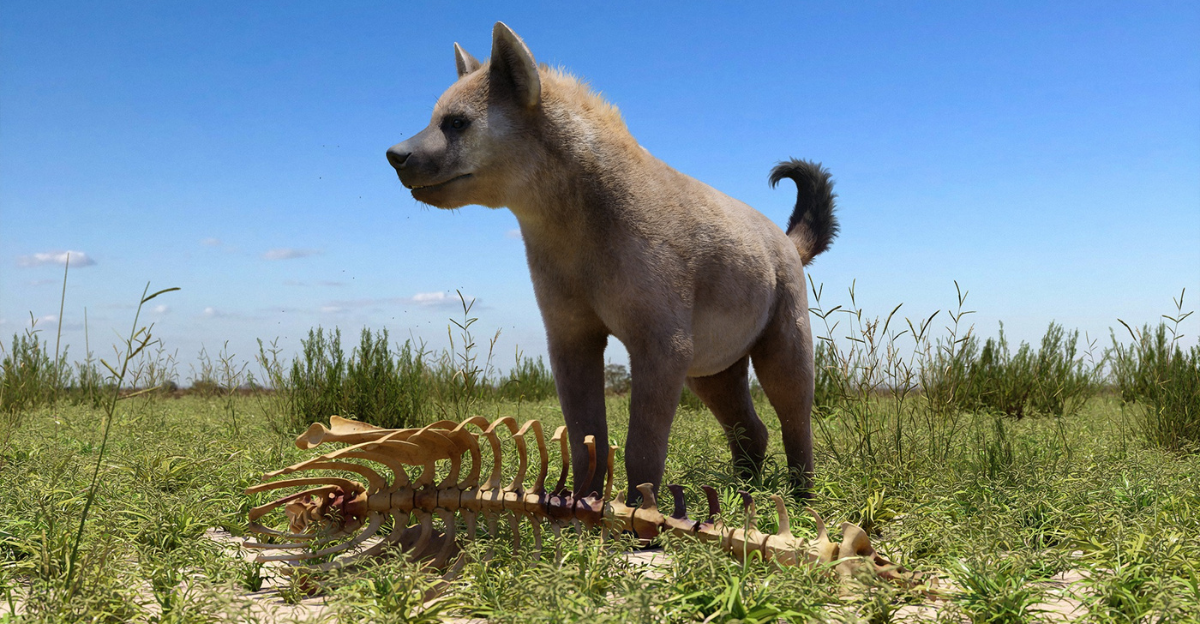
We recognize hyenas today as scavengers, but their ancestors were forced to hunt—especially species like Pachycrocuta brevirostris, a 400-pound hyena behemoth. In 1994, a human femur dating back 500,000 years and discovered in Morocco had definite bite and chew marks from such a creature.
The victim? Homo rhodesiensis, a subspecies that is close to both Neanderthals and modern humans. Whether it killed him or scavenged his corpse is open to debate, but one thing is certain—a long time past, hyenas didn’t mind snapping their jaws into us when the chance came.
5. Crocodylus Thorbjarnarsoni – The Swallowing Giant
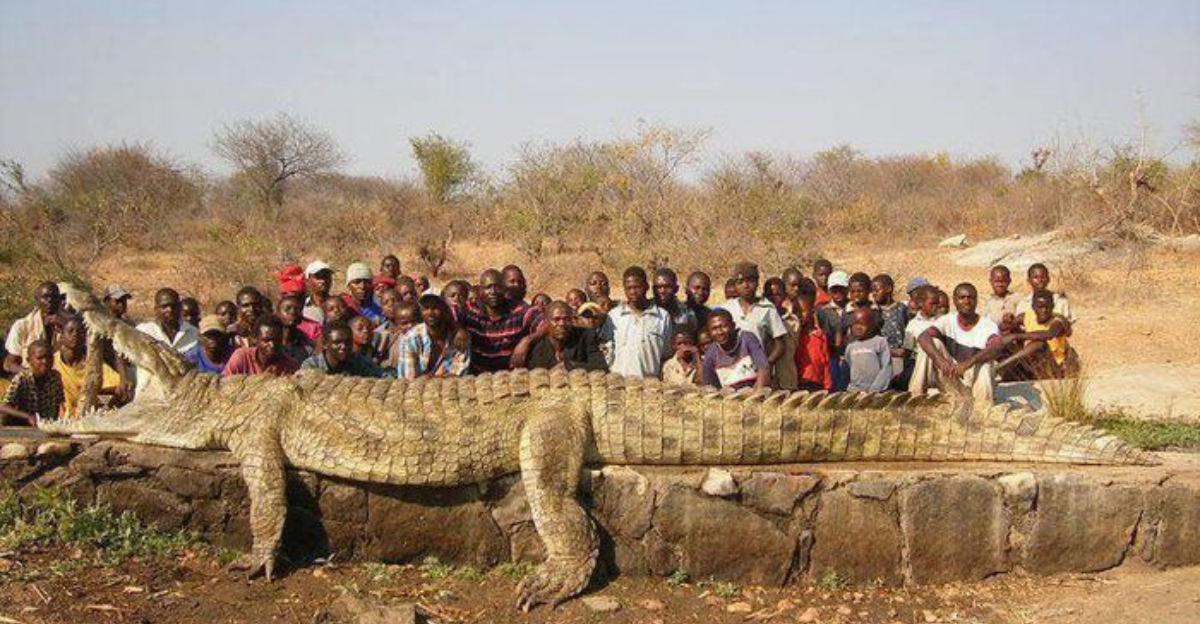
Imagine in your mind’s eye a crocodile big enough to swallow you whole in one bite. That was the look of Crocodylus thorbjarnarsoni, whose existence spanned 2-4 million years ago in Kenya. Measuring nearly 28 feet in length, this monster towered above any modern-day croc.
Mammals at the time roaming this region did not reach a height of more than 4 feet—snack size. There’s no direct fossil of a human inside one, but it’s very likely they were on the menu. It attacked them by streams and lakes where unsuspecting hominins went to get water.
6. Unidentified Eagle – The Taung Child Tragedy
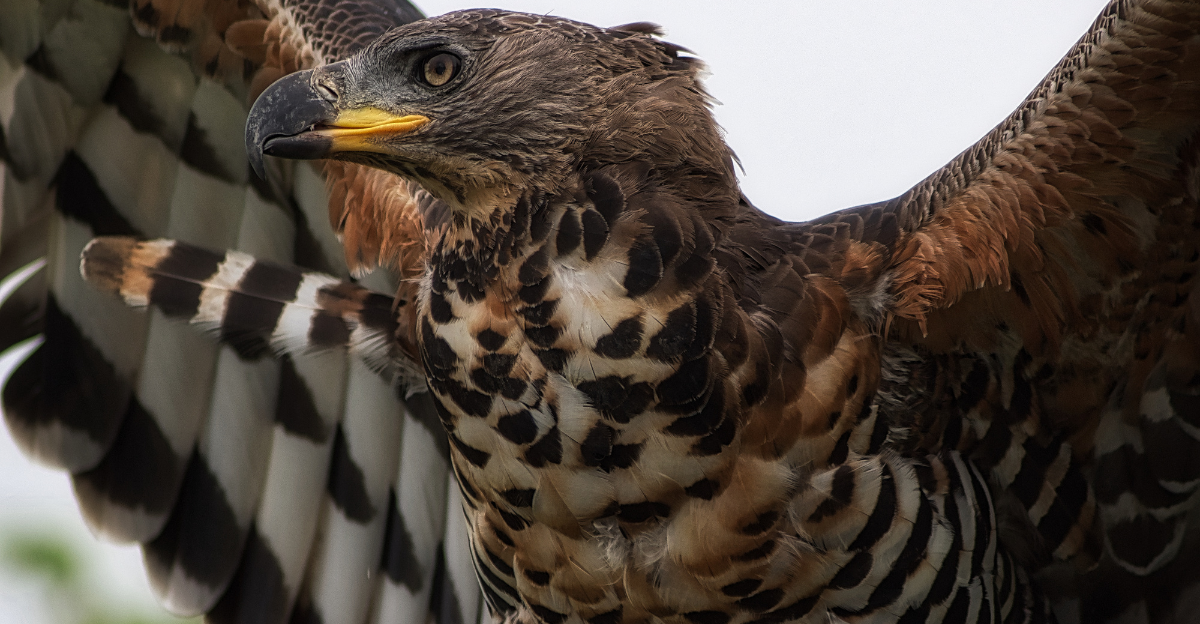
In 1924, the three-year-old Australopithecus africanus skull—the “Taung Child”—was found in South Africa. Scientists were shocked to see how the child was killed. There were scars across the sockets of the eyes which resembled the patterns of giant bird-of-prey murders. The prime suspect? An eagle that is not so different from today’s African crowned eagle.
Eagles would normally access the skull by going through the eye sockets to feed on the brain. A few specialists remain uncertain, positing a larger predator. But with fossilized evidence of beak and talon impressions, there is a high likelihood that the child’s final moments were spent in the clutches of a stealthy air hunter.
7. Cave Bears – When Home Became a Battleground
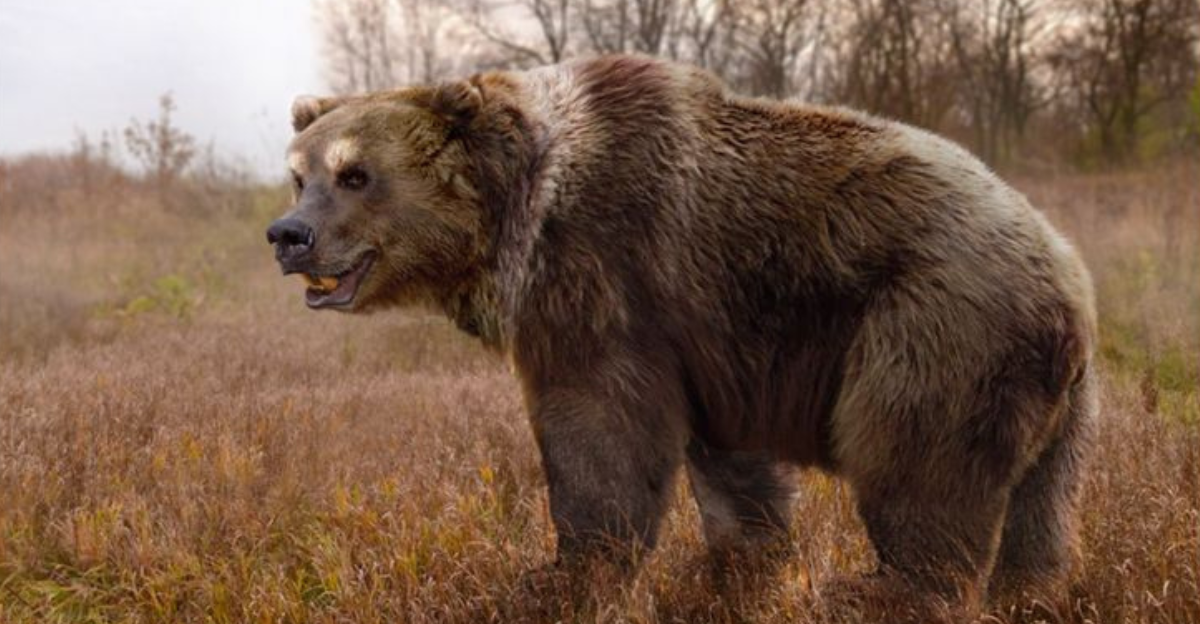
The cave bear, Ursus spelaeus, was not merely large—it was enormous, a size similar to grizzlies. They co-existed with early modern humans and Neanderthals in Europe during the Ice Age. People feared them but tended to combat them as well.
Cave bears survived on greens primarily, yet this did not render them kind. Sometimes, a bear would awaken to find humans had taken over its den. Encounters were occasionally deadly. Even in death 25,000 years ago, their cave-dwelling fossils told of coexistence, violence, and survival.
8. Snakes – Silent, Slithering Killers
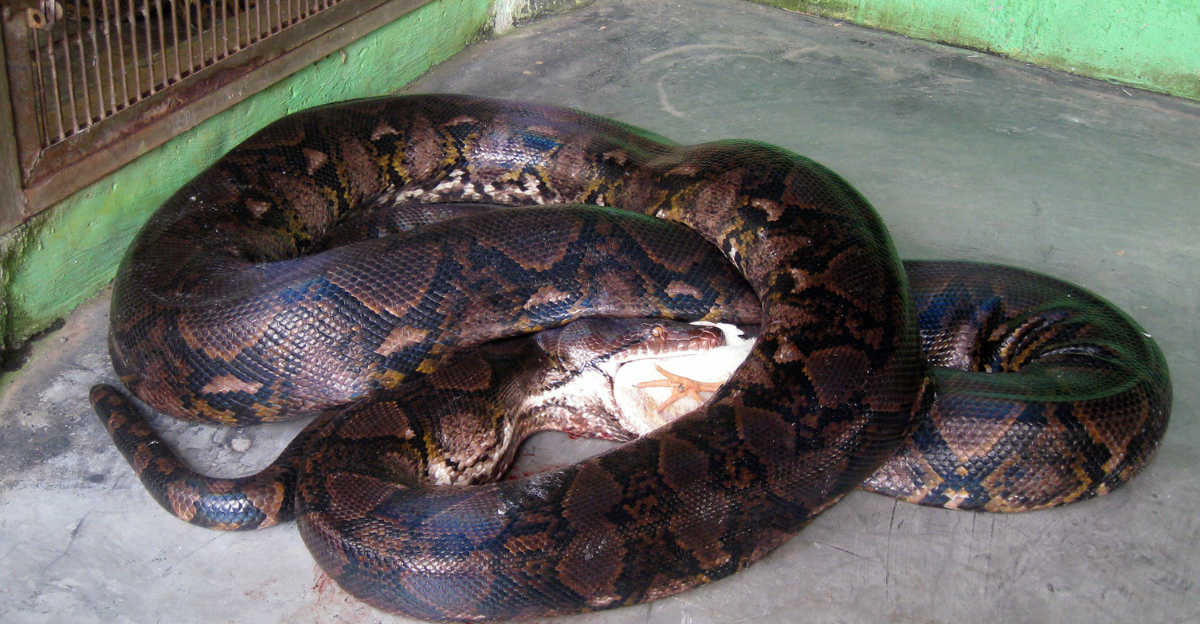
Snakes have been present in human nightmares for millions of years—and for good reason. For more than 100 million years, they had preyed on primates. Fossil evidence and evolutionary research indicate our fear of snakes is inborn. Snakes such as giant constrictors, ambushed early humans and wrapped them up, squeezing the life out of them before consuming them whole.
Others, with venomous bites, ended lives quickly. And it was persistent pressure that sparked an evolutionary arms race: when snakes became more cunning and dangerous, primates became smarter, quicker, and saw better. Our brains literally evolved to be able to see and avoid them.
9. Dinofelis – The Nightmare Cave Cat
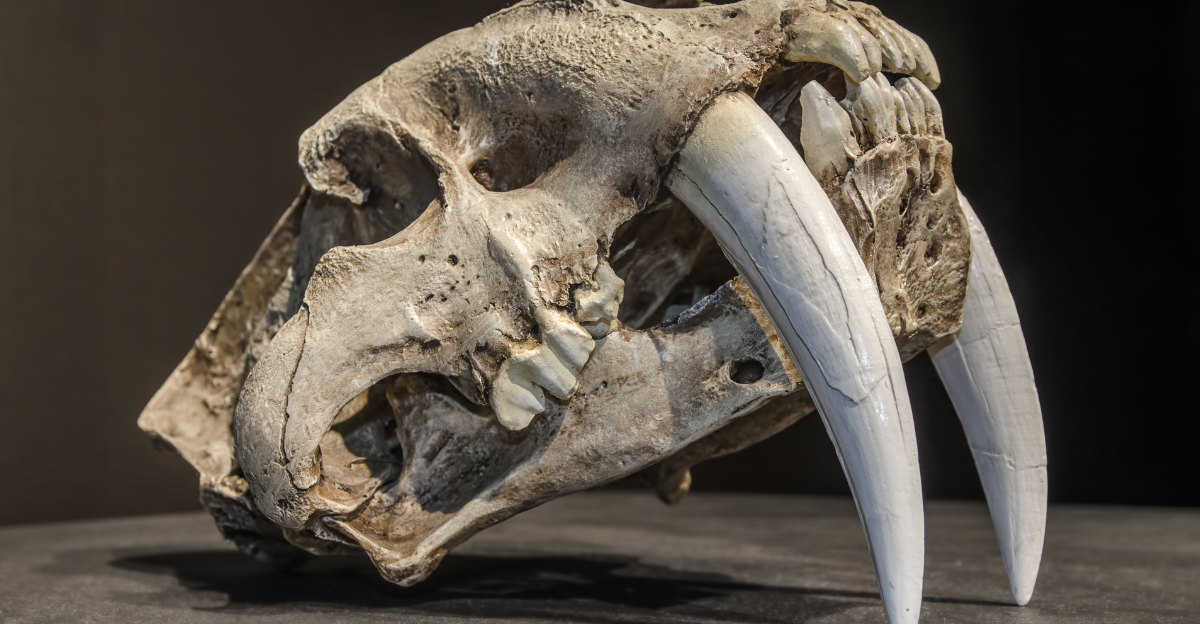
Reported to be “terrible cats,” Dinofelis were saber-toothed predators found in Africa, Asia, and Europe. It would have preyed on Australopithecines, such as Australopithecus africanus.
Fossils of both the predator and its prey have been found together in the same South African cave systems, and Dinofelis skulls have features that suggest it was an ambush predator in low light.
Their sturdy bodies and short arms suggest stalk-and-ambush methods—ideal for sneaking up on unsuspecting early hominins. The fact that both were discovered in the same shelters leads to a grisly conclusion: our ancestors may not have been sleeping alone.
10. Megalania – A Deadly Lizard Down Under
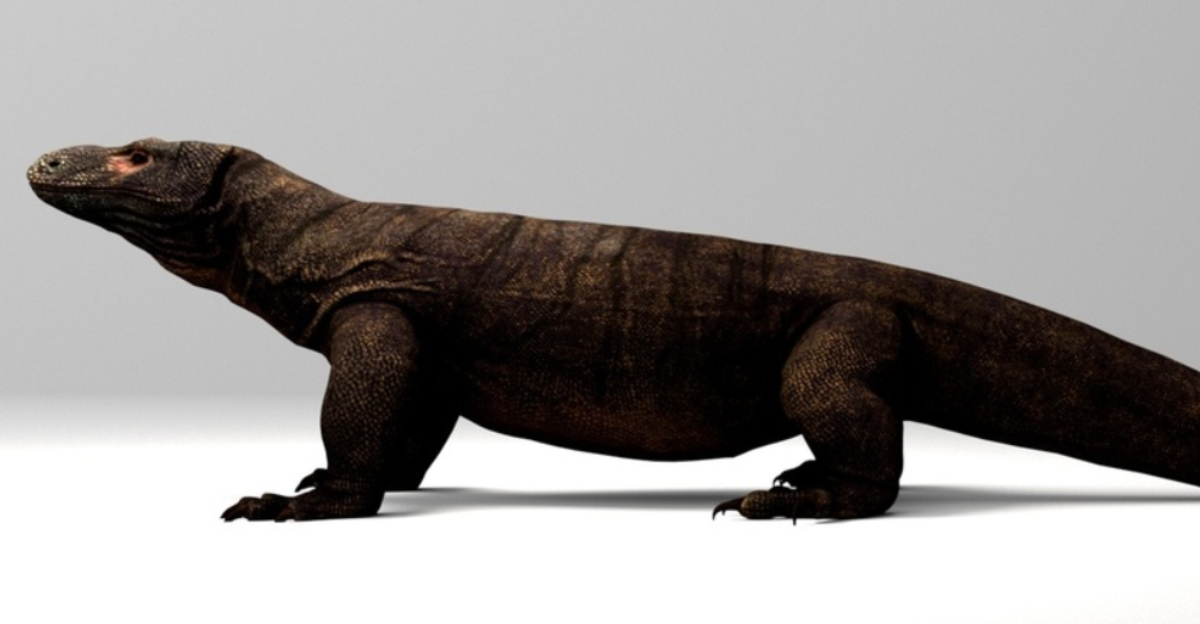
Australia’s premier Pleistocene predator wasn’t a lion—it was Megalania: a 23-foot-long ancient monitor lizard—possibly venomous. A relative of the Komodo dragon, this slow but stealthy giant was an ambush predator of giant marsupials—and perhaps the first humans to make it to Australia.
Aboriginal oral traditions tell of monstrous reptiles roaming the bush. Humans, when they arrived some 50,000 years ago, didn’t compete with Megalania—they avoided it.
11. Terror Birds – Running Into Trouble
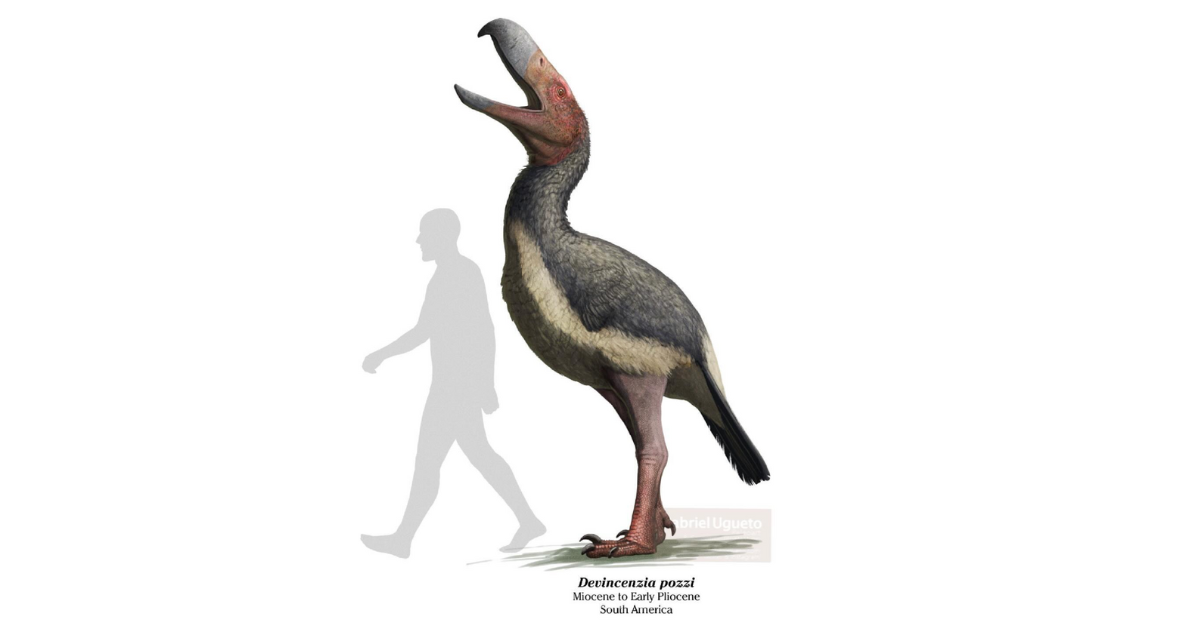
Terror birds, also known as phorusrhacids, were 10 feet tall and 1,000 pounds in weight. These carnivorous birds, which were flightless, roamed ancient South America at 30 mph with sledgehammer-like beaks.
Prior to the time humans crossed the land bridge from North America, early hominids or hominid-like creatures from other lands might have encountered predators like these—although there is no direct fossil connection to prove it. Nevertheless, if you’re picturing a velociraptor-tempered ancient ostrich, you’re heading in the right direction.
12. Panthera leo fossilis – The Prehistoric Lion King
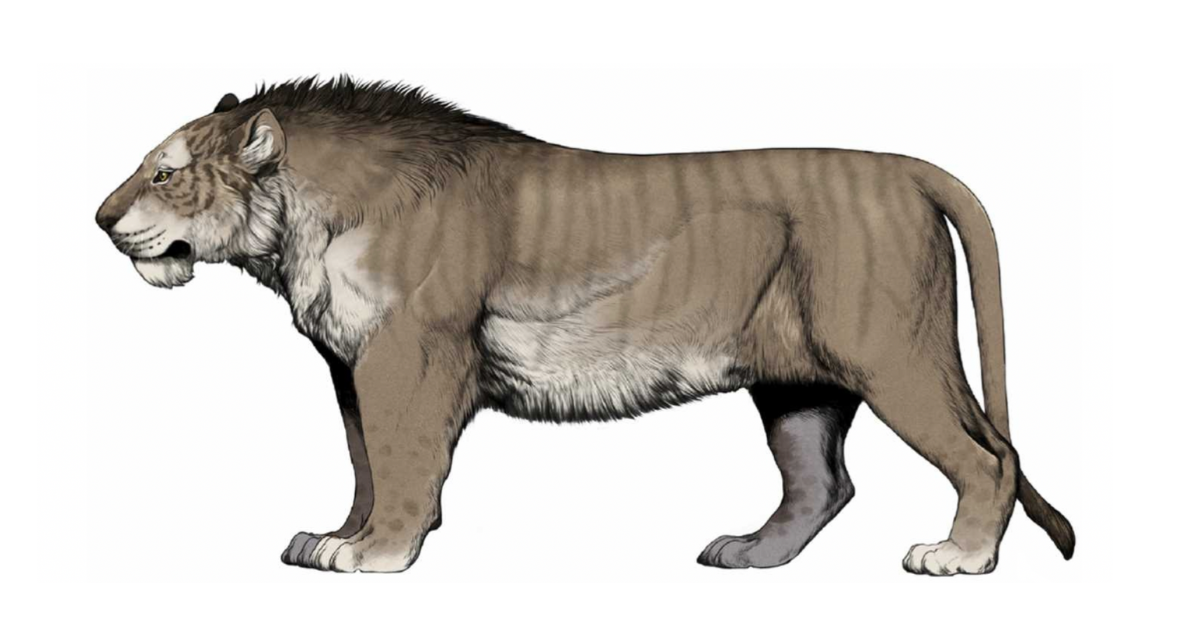
Before the modern lion, Panthera leo fossilis ruled Europe. These gigantic lions were 25% bigger than current African lions, their shoulders almost 4 feet high.
They shared the landscape with early Neanderthals and Homo heidelbergensis, and cave paintings indicate humans were well aware of their lethal presence. These lions stalked in groups and were capable of bringing down big herbivores—and the odd hominin who wasn’t careful enough or alone in the wrong clearing.
13. Andrewsarchus – The Hooved Horror
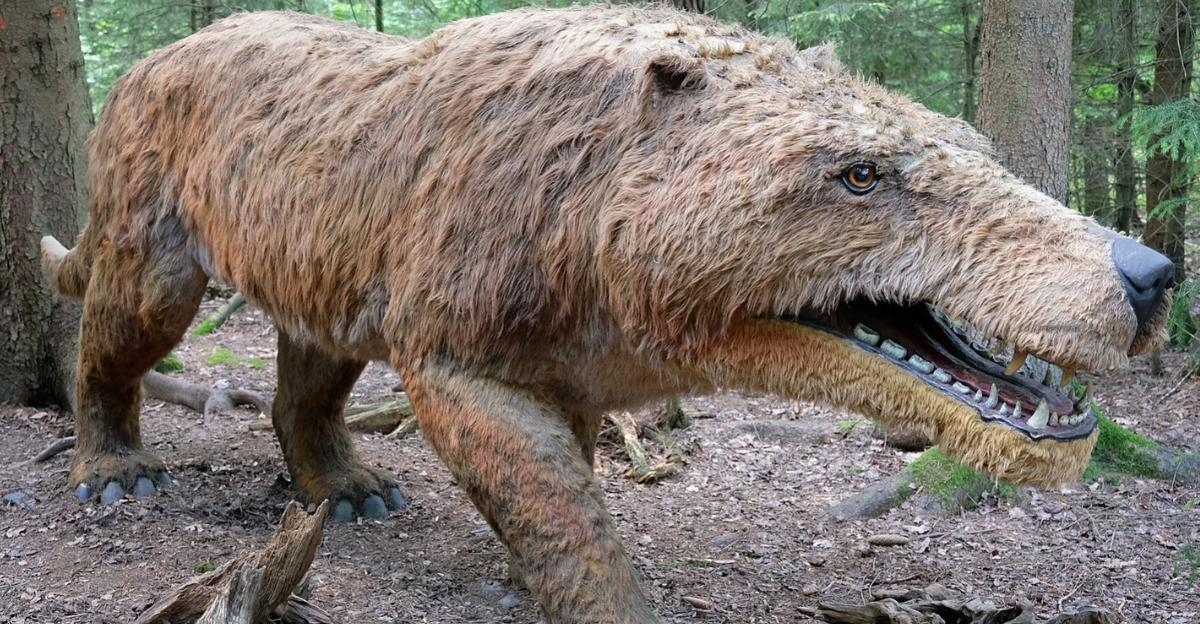
It isn’t known to have co-existed with early humans, but one of the largest land mammal carnivores ever found is Andrewsarchus mongoliensis. This Eocene epoch terror had a 3+ foot long skull and powerful crushing jaws.
It looked like a mixture between our modern-day wolves and pigs, if the two were a hybrid. It roamed what is now Mongolia, and though it existed millions of years prior to recognizable human beings, it provides an insight into how ferocious mammalian predators were before humans were present.
14. Gigantopithecus – The Giant Ape
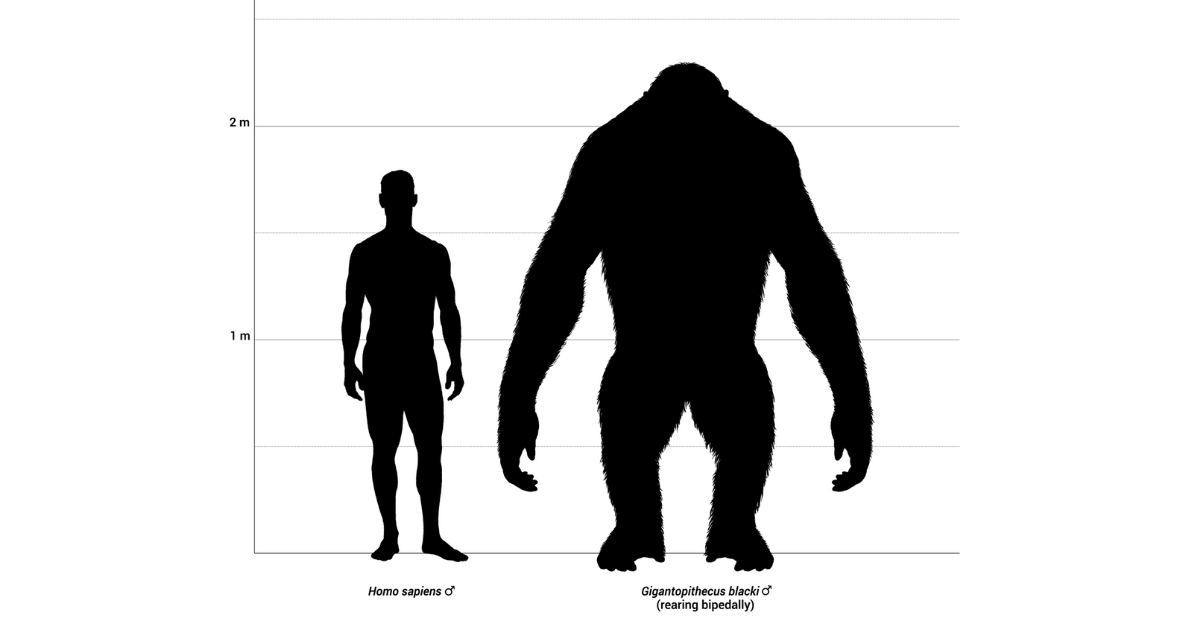
Not every danger was toothed and clawed—some would have appeared hauntingly familiar to us. Gigantopithecus, a 10-foot-tall ape that weighed up to 1,200 pounds, may not have hunted humans, but it would certainly have frightened them senseless.
In Southeast Asia 2 million to 300,000 years ago, it lived alongside early Homo erectus. Some think territorial behavior or unintentional encounters could have been fatal to early humans. Imagine yourself traipsing through bamboo forests and meeting Bigfoot—only the real thing this time.
15. Short-Faced Bears – The High-Speed Maulers
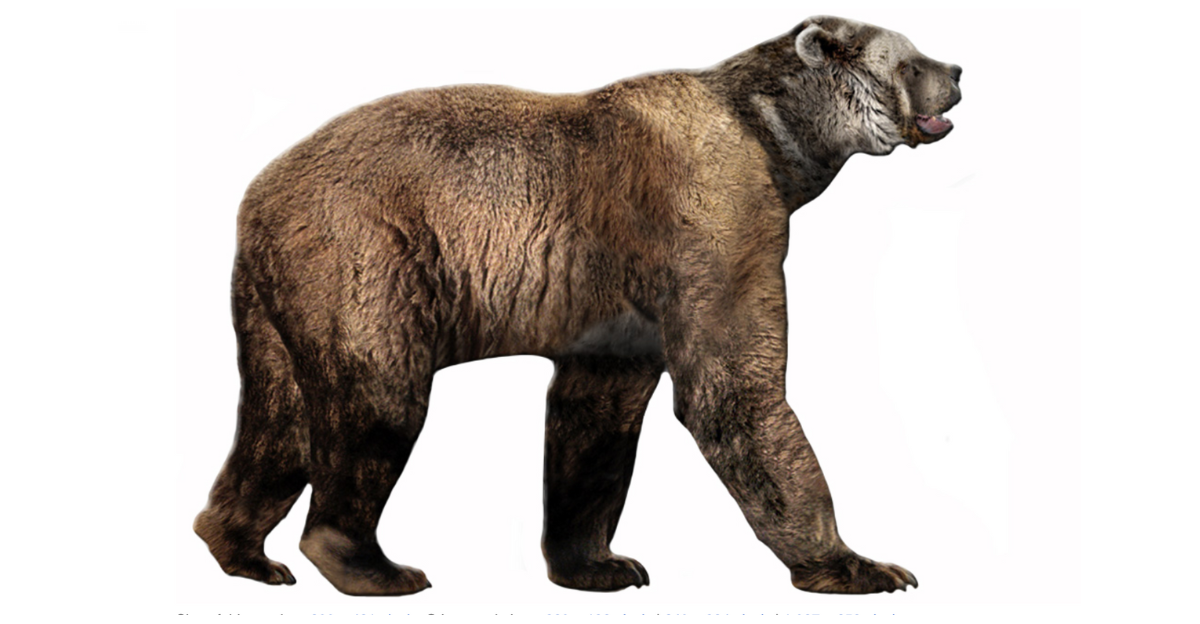
One of the largest mammal predators to have ever existed, Arctodus simus, the short-faced bear, weighed up to 2,000 pounds and reached 11 feet standing on its hind legs. This Ice Age bear from North America wasn’t just massive—it was also fast.
Its long legs provided it with a top speed of as much as 40 mph, so even the fastest humans wouldn’t stand a chance. Though it might have scavenged more than hunted, competition for territory and food could easily have changed that.
16. Pleistocene Giant Otters – Aquatic Menace
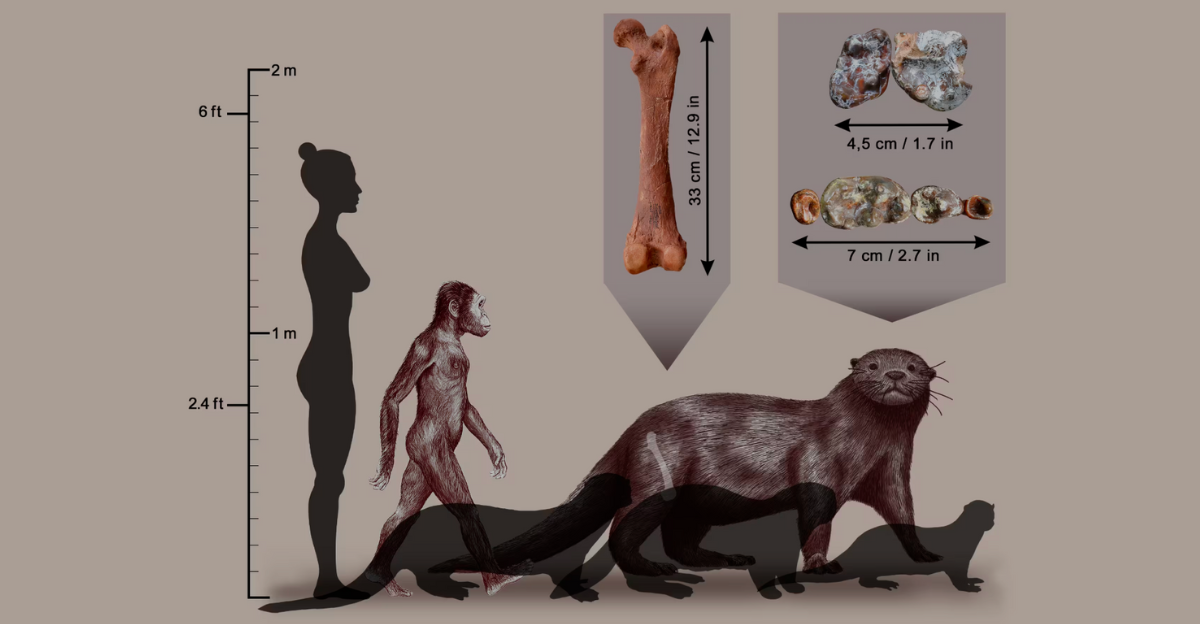
Picture a 6-foot-long otter—but not the adorable, rock-smashing kind. Fossils of giant ancient otters, such as Siamogale melilutra, were discovered in China, implying an apex predator ideally suited for swamps and rivers.
Early humans using water resources may have inadvertently stepped into their killing fields. These otters were robust in both bone and bite, and they probably fed on turtles, fish—and maybe anything else they could dominate. The water wasn’t only croc territory—it also had furry assassins.
17. The Giant Python – Death by Coil
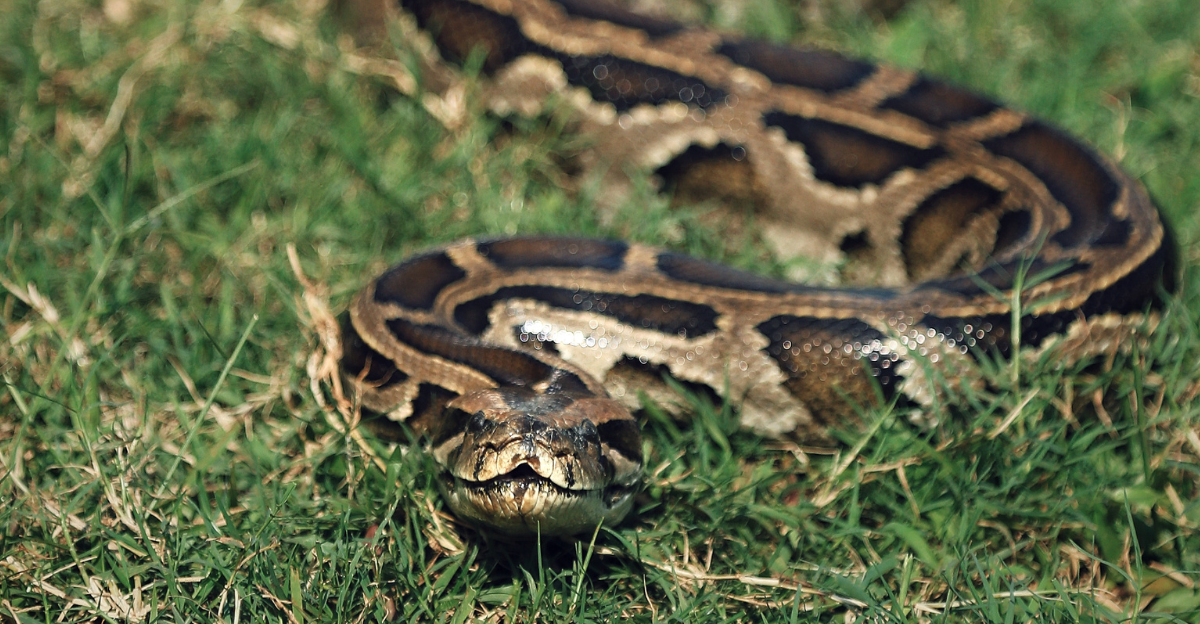
Giant pythons inhabited the forests and grasslands of Africa and South Asia. Some grew over 30 feet long. There is evidence that large constrictors would have had no problem dominating hominins.
Even today, reticulated pythons do attack and consume humans. Fossilized bones from various sites show bite marks and damage consistent with giant snake attacks. Just other predators at the water’s edge, these snakes used camouflage and ambush to trap their prey.
18. Homo Other – When the Predator Was Us
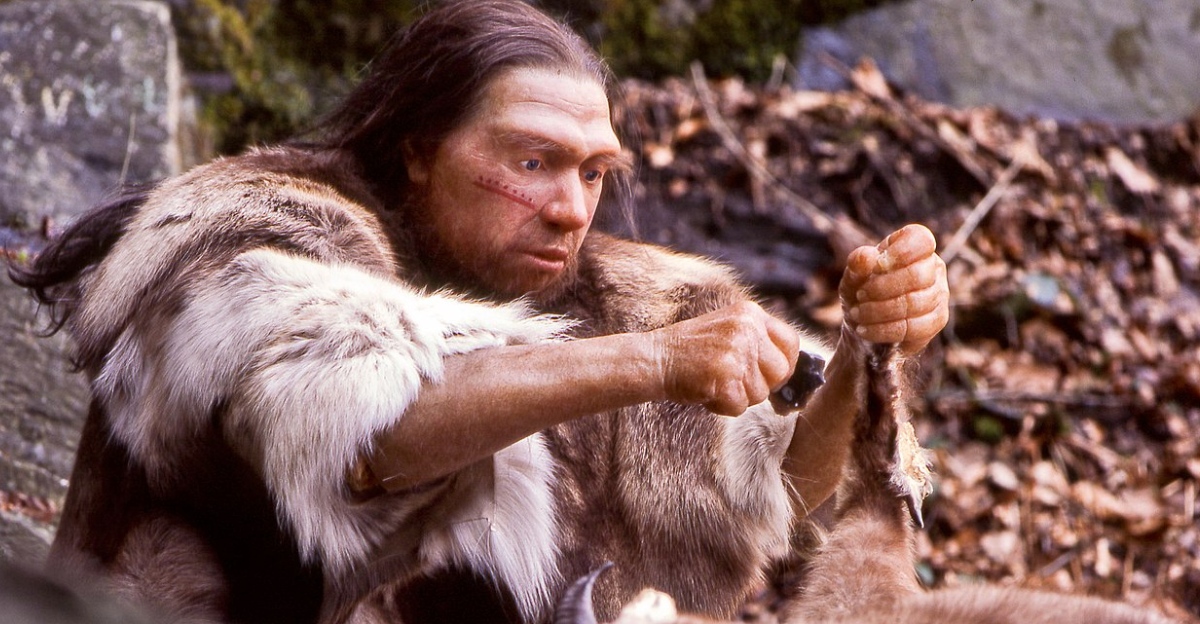
By far the most terrifying predator on this list isn’t an animal—it’s another human. As Homo sapiens migrated throughout the world, they competed not only against nature, but against relatives such as Neanderthals, Denisovans, and possibly other undiscovered hominin species.
The fossil record suggests violence—blunt-force trauma, cannibalized bodies and interspecies warfare. As our tools became sharper, so too did our potential to be apex predators.
And as Homo sapiens increased in dominance, all other hominin species died out. Whether through competition, out-hunting, or outright homicide, we became the predator
Final Reflections – From Prey to Predator
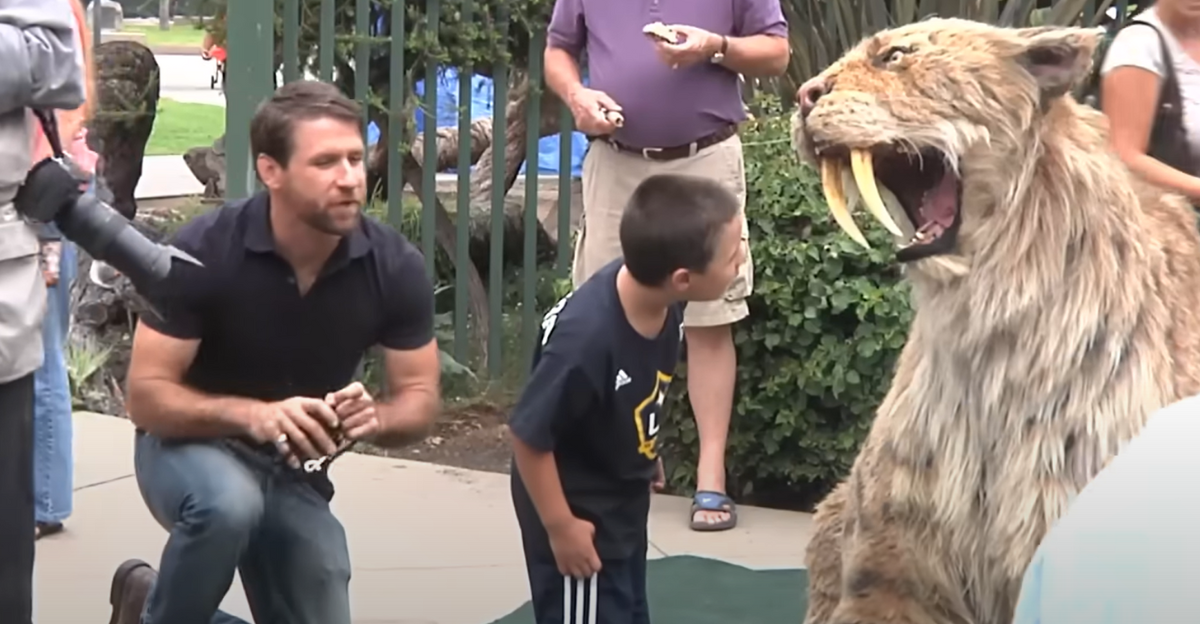
It’s easy to forget that human beings are descended from bottom-of-the-food-chain animals. For most of our history, survival has rested on being smarter than larger, more powerful predators. The animals on this list weren’t abstract threats—ones that we read about but don’t necessarily remember—stories etched in fossils.
Now that we have smartphones and cities, we tend to feel secure. But somewhere deep in our nature, the terror resides. A fluttering of wings. A disturbance in the water. A silhouette in a cave. Another humanoid relative. It’s an atavistic reminder that we come from a world in which there was always something hungry for us.
Explore more of our trending stories and hit Follow to keep them coming to your feed!

Don’t miss out on more stories like this! Hit the Follow button at the top of this article to stay updated with the latest news. Share your thoughts in the comments—we’d love to hear from you!







